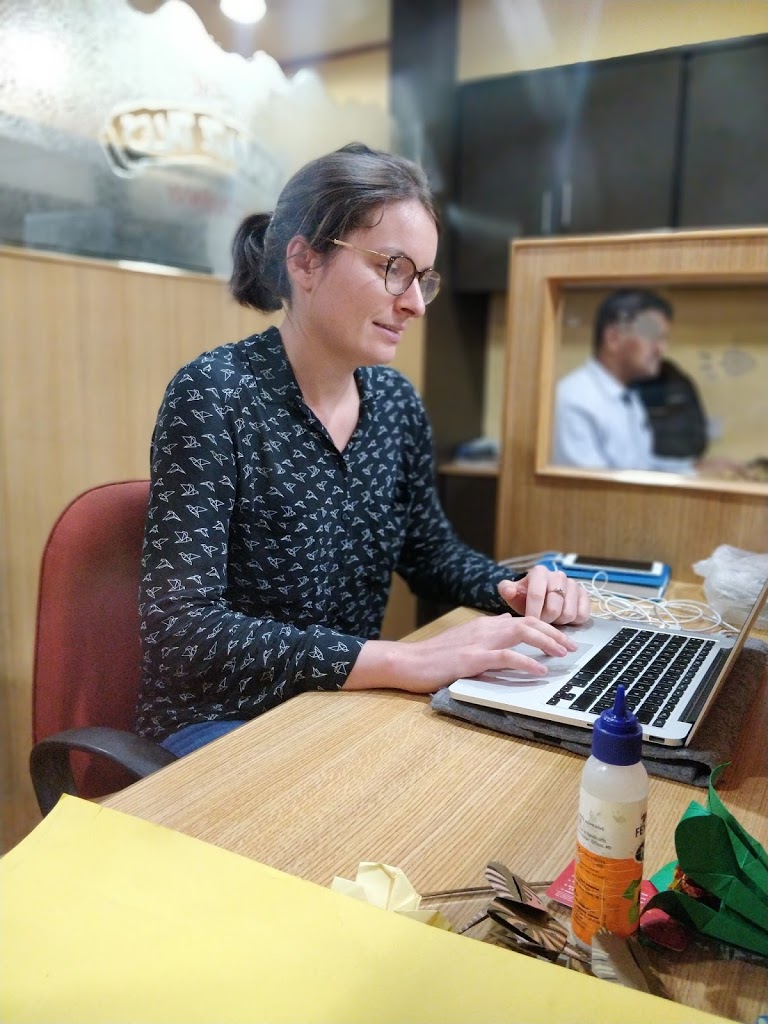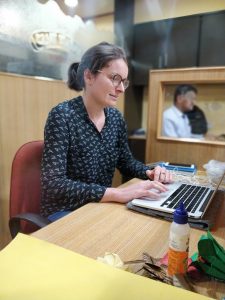Paying Homage to Dr. A.P.J. Abdul Kalam

(Noemie Bellanger interned with us during the month of April 2018. She writes about her experience working with Karadi Tales, and what she learnt about India through just our books.)
For the past few months, my life has consisted of travelling from one children’s book publishing house to another, from one country to another, doing one-month internships in seven publishing houses across the world. For my 4th internship, I ended up at Karadi Tales, a publishing house in Chennai, India, that I had been aware of for a few years ever since I worked on the British version of their book Monkeys on a Fast during a previous internship. Instead of this being just another average internship, this month was a real journey through Indian children’s literature.
In my first couple of days, I had the chance to go through Karadi Tales’ catalogue. I travelled from Allahabad with Farmer Falgu Goes to the Kumbh Mela to Kashmir with Sadiq Wants to Stitch, to the mountains of Ladakh with Thukpa for All. I gathered that India is a diverse country with multiple cultures and communities, and that each region can be vastly different from the other. When you come from France, as I do, you tend to have certain stereotypical views of India – a country where everyone eats naan, all the women wear sarees, and everyone dances to Bollywood music. But when I read Karadi Tales’ books, I got a clear insight into the many different regions of India and realized that each of them have different languages and dialects, different food, different cultures, and habits. Because children’s picture books have so many references to everyday life, it is one of the best ways to prove stereotypes wrong and to comprehend the complexity of a country and its various cultures.
Learning about Indian illustrations and tribal art was a priority for me during my trip to Chennai. At Karadi Tales, I got the opportunity to meet artists and designers like Ashwathy P.S. She told me about the process of making Fly, Little Fish!, a book by Karadi Tales that uses Gond tribal illustrations. She explained how difficult it was for her to reproduce the same little fish all through the book with different perspectives using only dots and lines. Before I came to Karadi Tales, I had no idea about tribal art styles like Gond, Bhil, or Warli. I also did not know that art was a part of daily life here until I walked down Chennai’s streets and noticed the kôlams on doorsteps drawn every morning by women. Art can be found everywhere in India – on the floor, on the walls, and even on clothes. How does one continue to produce original, unique art when there is so much all around? I imagine this must be a big challenge for Indian illustrators.
Reading and storytelling can take you on a trip of its own kind. I remember when I was a child, every night, my mum used to tell me a story before I went to bed. For me, it was like a sacred ritual and I couldn’t sleep without it. As I grew up, I continued to be fascinated by storytellings. I still love hearing books read aloud, it gives you the impression the characters are talking directly to you. The whole concept of audiobooks struck me as being such a great idea – what a wonderful way to promote stories and reading! With Karadi Tales audiobooks, you not only have someone reading you the story, but even better, you have beautiful background music to get the atmosphere of the story. Another way of discovering stories that Karadi Tales has brought to Indian children’s literature.
Now that it is time for me to go to another country, I recognise that books can be a great introduction to a country and can give you a unique perspective into the everyday life and culture of that country. Books can make you travel through any country during any time in history. They make up some of my best memories from the past and continue to be one of my best excuses to live the present as intensively as I can.
Related posts





